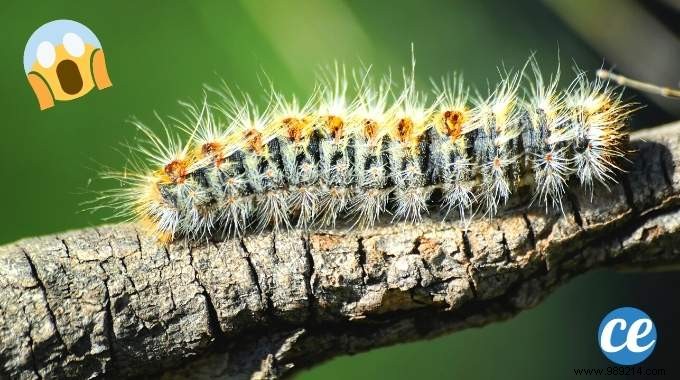
Today I show you how to get rid of processionary caterpillars.
Caterpillars... what? PROCESSIONARY TRACKS. They bear this name because they move in single file.
This harmless-looking insect is actually a real threat to you and your plants!
And I can tell you that I know what I'm talking about, because I paid the price.
Its long hairs are dreadful stings that are highly toxic, stinging and allergenic.
But do not panic; without using chemicals, I managed to eliminate these harmful insects.
You just have to use the right means; you want to know which ones?
Discover how to get rid of processionary caterpillars naturally with 5 effective tips:
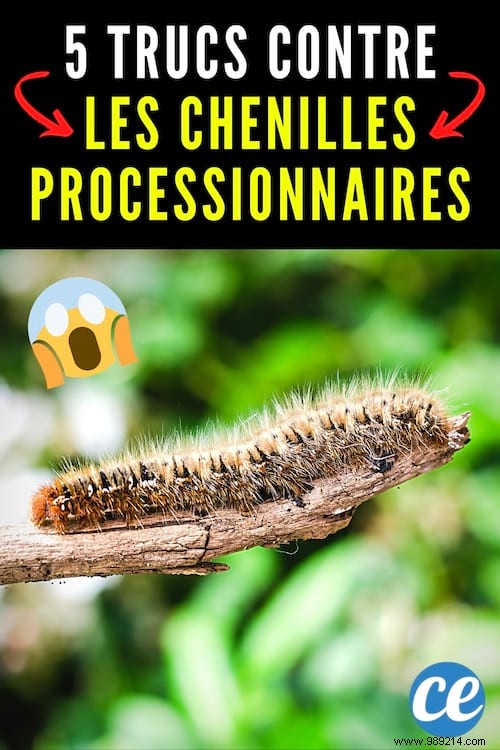
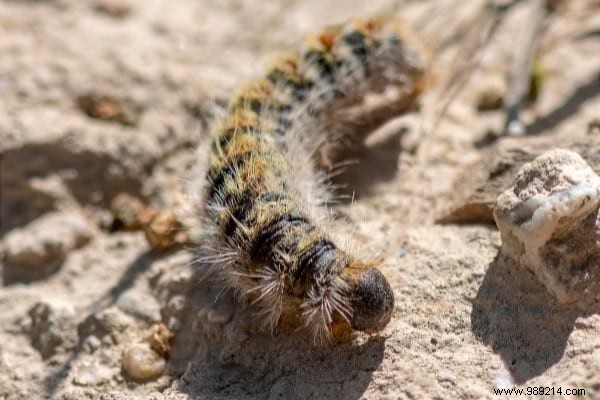
From its scholarly name Thaumetopoea pityocampa, processionary caterpillars are recognized by their very specific characteristics.
First, they only move in single file , each of them hooked to each other.
Then, know that these caterpillars usually live near the pines on which they feed.
So if you have this type of tree in your garden, inspect the area carefully.
Because if a nest of processionary caterpillars forms, your vegetable garden and your plants may suffer!
And that's not all. These insects are also dangerous for humans and pets.
Caterpillar hairs are extremely stinging, even for people who are not allergic to insects.
So watch out!
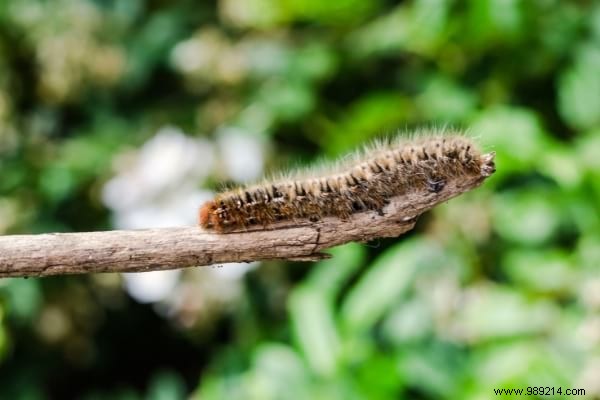
Don't be fooled by the small size and harmless appearance of these caterpillars.
A sting on our skin and red patches or respiratory problems appear.
We have even seen much more serious cases with anaphylactic shocks!
I'm not even talking about the burns and pimples that these caterpillars leave on the skin...
And what is valid for us is also valid for our pets.
Be careful not to let our dogs and cats approach these insects when they walk in the garden.
He could also get bitten by walking on them, playing with them or worse, by swallowing them!
In the latter case, their tongue would become swollen and we would be good for a trip to the vet.
Finally, having processionary caterpillars in your garden is a real plague for plants!
They eat and destroy everything in their path, pines and cedars in the first place.
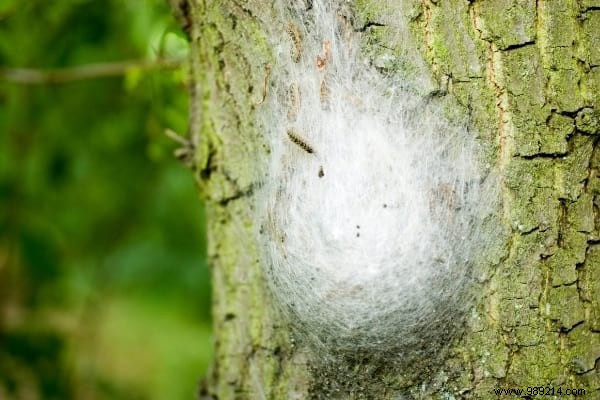
In autumn and winter, the nests are easily spotted:it is a pear-shaped white cocoon.
But with the onset of spring, the processionary caterpillars leave the nest to go to the garden.
And as explained above, these insects are all the more present if you have pine trees nearby.
So as soon as the fine weather arrives, take the opportunity to inspect the premises, pine area in priority.
Be careful though; these insects being harmful, do not go there with a gun!
Put on long clothes, boots, gloves, and especially pay attention to your face.
Protect your mouth and eyes with goggles, masks, scarves or other means.
Once off on an adventure, don't shake tree branches or the dirt when you do your research.
You could be in direct contact with the caterpillars or they could fall on you.
If you encounter the dreaded caterpillar nest, you have 2 solutions.
Either hire a professional to remove it, or remove it yourself.
In the second case, be extremely careful. Never clear the nest by tapping or shaking it.
The stinging hairs retain their toxicity for a long time, even when the insect is dead.
Also, do not eat fruit that is near a nest.
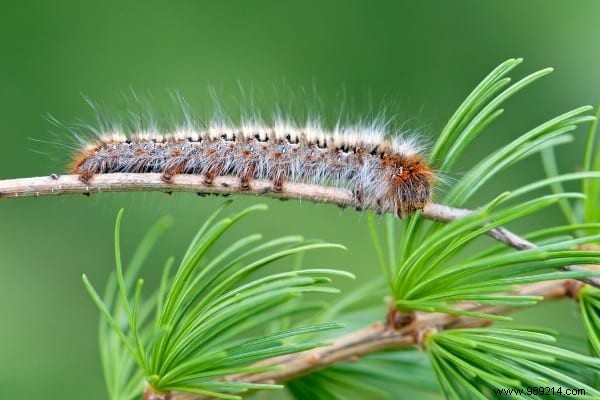
Several natural methods have been proven to eliminate these harmful insects.
They work perfectly and above all allow you not to contaminate your floors.
Let's see together the 5 most effective tips to kill these insects permanently:
These friendly little birds are fond of processionary caterpillar larvae.
Especially the great and blue tits which are their worst predators.
Luckily, these birds are not sensitive to stinging hairs!
It is therefore necessary to try to attract these tits near the nest so that they delight in these insects.
For this, create small nest boxes containing water and add some food.
Be careful, do not add too much either, because if the birds are full, they will no longer eat the caterpillars!
Place the feeder near the pines near the caterpillars and let these providential birds do their thing.
Finally, be aware that other species also appreciate these pests.
This is the case for example of orioles, jays, gray cuckoos, thrushes, wrens...
Or even bats that feed on butterflies.
Birch is a very leafy and very fragrant tree.
And that suits us well, because processionary caterpillars hate its smell.
Plant some in your garden and/or around the pine to prevent a caterpillar invasion.
Thuringian bacillus (bacillus thuringiensis) is a formidable insecticide against processionary caterpillars.
This product has the effect of attacking their digestive tract, which eventually kills them.
It therefore effectively stops the development of worms and caterpillars, but in a natural way.
The Thuringian bacillus is indeed 100% organic.
To spread it, use a long-range sprayer or a telescopic lance that makes it easier to reach the nest.
The only precaution to be taken, the use of the product must be done quickly after purchase.
Indeed, the Thuringian bacillus has a very short expiry date.
The Ecopiège collar is a little expensive to buy, but remains a reliable, effective and natural solution to use.
The process consists simply of surrounding the tree (the pine) with a bag filled with soil and needles.
When the caterpillars descend from the tree, they rush into the bag and believe they have arrived on the ground.
They then begin their chrysalis process (you know the cocoon that turns into a butterfly).
Once the caterpillars are trapped, all you have to do is burn the bag to get rid of these pests.
Nests that are to be carried or that you can reach with a tree pruner must be detached and destroyed.
When I say to destroy, it is by burning them!
Incineration makes it possible to eliminate the ENTIRE colony.
You are then sure not to be bothered by these caterpillars.
When carrying out the destruction, do not forget to put on long clothes and gloves.
Ditto for the face and for your eyes; protect them well when moving the branches.
And if the nest is particularly difficult to reach, get help from a professional (pruner or landscaper).
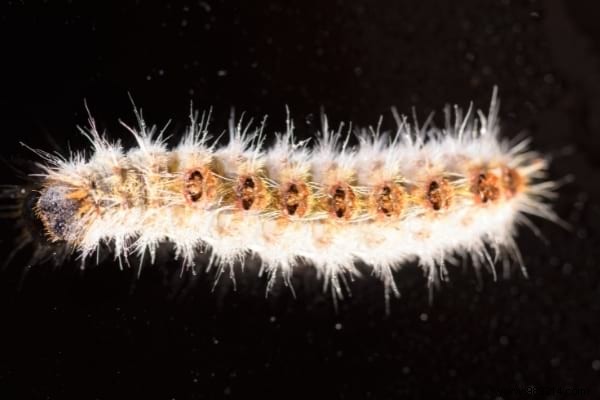
A processionary caterpillar sting hurts, very badly.
So above all, we make sure not to rub against these insects!
But if despite our advice, you still got bitten, don't panic.
You are told what to do and how to react.
If you live in an area where caterpillars are present, some precautions should be taken:
- If you can, dry your laundry at home rather than outside, especially on sunny days.
- When you harvest your vegetables, wash them thoroughly.
- Remember, a few days before mowing the lawn, to water the grass.
This prevents any stinging hairs that may be present from flying all over the garden.
- As soon as a tree appears sick, be careful not to stay near it.
Don't let children play nearby either.
If you have one or more pines in the garden, inspect them regularly. This avoids unpleasant surprises.
Finally, be aware that oaks, fruit trees, hazelnut trees, fir trees, lime trees, cherry trees can also be infected.
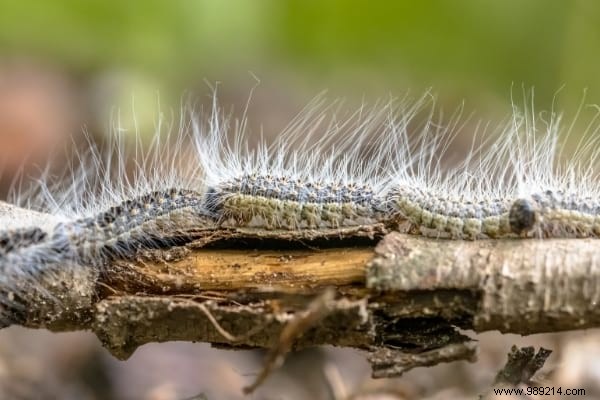
In case of skin contact:
- Remove all clothing with gloves and wash in boiling water
- Wash your body well with soap
- Go see your doctor so that he can prescribe antihistamines if necessary
In case of eye contact:
- Make an appointment as soon as possible with an ophthalmologist.
- This specialist usually applies an anesthetic solution to relieve the pain and cleans the eye.
- It also makes it possible to accurately diagnose the needs of future treatments.
If inhaled:
- If you have trouble breathing, go see a specialist right away.
- He prescribes the right drugs to take in such cases (antihistamines, corticosteroids, aerosols, nebulizations, etc.).
If swallowed:
- You should drink a large glass of water to dilute all the swallowed hair as much as possible.
- Go see your doctor as soon as possible.
- Very often, when hairs are ingested, an endoscopy (under general anesthesia) is necessary!
If you see your pet squealing, in pain, and drooling, do this:
- Take a good look at his tongue and see if any blisters appear.
- Sprinkle his face with plenty of tap water.
- Take him to the vet as soon as possible.
A dose of cortisone is usually given to relieve it.
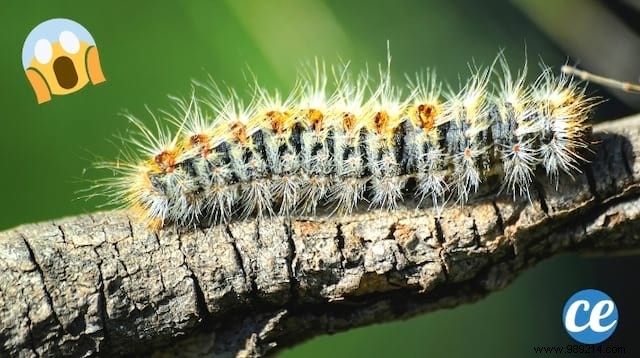
There you go, you now know how to fight processionary caterpillars naturally :-)
Easy, convenient and effective, right?
No need to go to Leroy Merlin, Castorama, Jardiland... to buy harmful insecticides.
Our homemade treatments allow you to eradicate these stinging caterpillars once and for all!